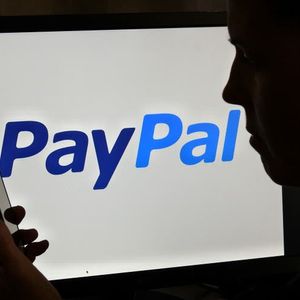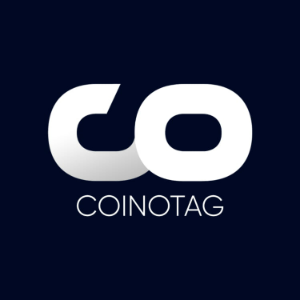PayPal: Stablecoin Will Power Growth
7 min read
Summary PayPal’s recent share price weakness is overblown; entrenched merchant relationships and Fastlane checkout innovation support its core franchise and growth prospects. PYUSD stablecoin is a major catalyst, offering regulatory advantages, APY yield, and potential to boost net income by $4 billion if PayPal captures 20% market share. Valuation is attractive: PayPal trades below historical averages despite superior cash flow growth, offering investors significant upside if multiples expand. Risks from competitors and stablecoin adoption exist, but regulatory positioning and network effects make PayPal a strong buy with asymmetric upside over 12-24 months. Co-Authored by Noah Cox and Brock Heilig Investment Thesis Shares of PayPal ( PYPL ) have had a rough first half of 2025. Year-to-date, shares of the financial technology company are down nearly 17%. With the rise of stablecoins the reasons for PayPal’s underperformance has been due to fears that Apple Pay and Shopify are encroaching on PayPal’s checkout share along with stablecoins encroaching on their payment processing fees. With this, however, I really believe that these concerns are overstated. PayPal has entrenched merchant relationships and high-conversion funnels. I want to focus on management’s “ win checkout ” push for 2025 – particularly the Fastlane one-click guest checkout launched in early 2024, which I wrote about extensively during my last piece of coverage on PayPal. I view this as a direct effort to streamline purchases and defend PayPal’s core franchise. I believe that PayPal’s vast network of over 400 million accounts between both consumers and merchants creates durable scale advantages that are hard for new entrants like Apple Pay and Shopify to replicate. In my opinion, there is promising optionality in PayPal’s growth stories – most notably crypto – highlighted by the 2023 rollout of the PYUSD stablecoin, which could help lower transaction costs and open new rails for payments. With legislation moving through Washington DC that promises regulations for Stablecoins, this could be a huge catalyst. Paypal should benefit. With this, I continue to believe shares are a strong buy. Why I’m Doing Follow Up Coverage Since I published my last coverage on PayPal, shares of the company dipped by as much as 21%, but they have since rebounded, and they’re down just about 2% since late February when I last published coverage on PayPal. I think most of this recent selloff has been driven by Apple Pay and Shopify fears, echoing mid-2022 worries that ultimately proved unfounded when Apple integrated PayPal as a checkout option. I’ve seen anecdotal bear arguments gain some traction, but I think these are isolated and are definitely not reflective of PayPal’s broad merchant base. Something that keeps me bullish on PayPal heading into the rest of the year is CEO Alex Chriss relentless focus on winning back market share as his top priority. Fastlane is a big part of this story. With this, early metrics continue to reassure me. As noted on the Q4 call : 75% of Fastlane consumers are new or dormant PayPal users. This means that Fastlane not only improves conversion for our merchants, but also introduces more shoppers to PayPal and enables us to reengage in active users. With the growth of their stablecoin + stronger regulatory backing in DC for stablecoin, I think this makes now a perfect time to revisit PayPal. I believe the recent pullback is just short-term noise. I think the bull case is accelerating. Stablecoin Deep Dive To understand why Stablecoins are a big deal for PayPal, I want to focus on PayPal USD and why this is such a big development for PayPal. PayPal USD (or PYUSD) was launched in August 2023 as the first US-backed stablecoin from a major fintech company. The stablecoin was issued via Paxos Trust , is fully collateralized by dollar deposits and U.S. treasuries, and is pegged 1:1 to the U.S. dollar. With growing adoption (and a more favorable environment in DC) we’ve seen a trend begin to develop where stablecoins are being brought into mainstream payments. PYUSD is being integrated across both PayPal and Venmo for P2P transfers, Xoom remittances, and third-party wallet payments. The goal here is to leverage blockchain rails to undercut card network fees and settlement times. I think PayPal’s 400 million+ user base and merchant integrations give PYUSD a huge distribution edge in both commerce use cases and remittances – both of which are situations where crypto-native stablecoins have struggled to gain traction. To add to this, in April 2025, PayPal partnered with Coinbase to waive fees on PYUSD buys and sells and enable one-click conversion to USD. In the future, I expect the roadmap to enable merchants to settle directly in PYUSD. This could be huge and help eliminate fees with cross-border transactions. PayPal plans to roll out a 3.7% APY yield on PYUSD balances in PayPal and Venmo wallets starting in the summer. What this means is that it will make holding PYUSD materially more attractive than cash or rival stablecoins. I view PYUSD as a catalyst for seriously accelerating the amount of cash PayPal holds on its balance sheet that it can generate interest on. In a way, PayPal becomes closer to a bank, which could have huge implications on net income margins. The potential for this market could be huge, with US Treasury Secretary Scott Bessent estimating that the TAM of stablecoins could exceed $2 Trillion in just a few years. If Paypal grabbed 20% market share with its stablecoin ($400 billion) and then make a 1% net income margin spread on it ($4 billion) this could go a long way to increase their bottom line. Valuation Currently, PayPal has a forward Non-GAAP price-to-earnings ratio of 13.88 . This is a 33.85% premium to fintech/financial peers, with the sector median currently sitting at 10.37. However, this 13.88 P/E ratio by PayPal is more than 51% below the company’s five-year average of 28.66. Seeking Alpha Quant gives PayPal a grade of a D+ on this metric. PayPal’s forward price-to-book ratio of 3.22 is almost 196% higher than the sector median of 1.09. Meanwhile, similar to their forward price-to-earnings ratio, this mark is about 50% below the five-year average for PayPal. The company earns a grade of a D- on this metric. In my opinion, these two metrics reflect PayPal’s profitability. The market still values the company at a higher multiple than a traditional bank (more tech savvy) but not as high as other fintech leaders. Interestingly, PayPal’s forward projected operating cash flow growth rate of 20.12% is more than double the sector median of 10.04%. This is given a grade of an B+ by Seeking Alpha Quant. In essence, the company trades at a 33.85% premium to the sector median on a forward P/E ratio yet has forward cashflow growth that is projected to be more than double the sector median over the next 12 months (4 quarters). In essence, I think the company’s forward P/E ratio should be at least a 60% premium to the sector median given this well above sector median growth. If we saw their P/E premium expand to a 60% premium, this would represent 77.25% upside from here. We get this upside by taking the projected premium (60% premium) and dividing it by the current premium (33.85%). Frankly, I think even this 60% premium may turn out to be conservative. If we price in an additional $4 billion in net income from a 20% market share in the stablecoin market, I think this will make their cash flow growth even stronger than expected. Risks PayPal (despite their share price performance) should be a winner from the stablecoin revolution. That doesn’t mean they are risk free. The biggest risk from the stablecoin revolution, in my opinion, is the intense fintech competition. I see Stripe’s global stablecoin push (their Bridge acquisition) and Apple/Shopify checkout integrations as credible threats to PayPal’s market share and fee-take rates. Another risk I see is how ingrained some of the early movers are. It’s clear to me that USDC and USDT have cemented themselves as leaders. Switching would require clear benefits (their account yield of 3.7% APY may accomplish this). The other benefit is that PayPal is going down the regulatory-sanctioned route for stablecoins. This means that as USDC and USDT (run by Tether) are subject to more audits, we should see the benefits of building a stablecoin with regulations in mind as a key strategic edge. There have been industry rumors that some stablecoins like Tether are not 1:1 backed by liquid assets. What we are about to find (thanks to the stablecoin act called the GENIUS Act) is that stablecoins are about to become a market where participants (stablecoin issuers) ask for regulatory permission. Not regulatory forgiveness. Most of finance works this way. As stablecoins move this way as well, PayPal should benefit. Bottom Line While shares have slumped year to date I remain confident in PayPal. I think they’ve established themselves as a trusted brand with high-conversion checkout funnels and two-sided network effects. I think these things underpin what I think is its durable digital-payments leadership and path to serious growth in the stablecoin space. I view PYUSD as a long-term growth engine. If mainstream stablecoin usage takes off within PayPal’s ecosystem, it could meaningfully lower processing costs and deepen engagement. I think most of the bearish concerns are coming from Apple/Shopify/Braintree headwinds, but I think all of these are manageable and are largely priced in. This sets a low bar for positive surprises in 2025-26. I think Stable coins are the biggest part of the bull thesis. Stablecoins have the opportunity to be a $4 billion lift to net income alone just on effective net interest income margins. I think the valuation is supported by really durable cash flow, which makes for a scenario where investors effectively get optional upside from new initiatives “for free” on top of the stable core business. If management can successfully execute on checkout innovation and stablecoin adoption, I still consider PayPal to be a strong-buy with asymmetric upside over the next 12-24 months. The market appears to be irrational. This should be a gift to investors who are patient.

Source: Seeking Alpha


